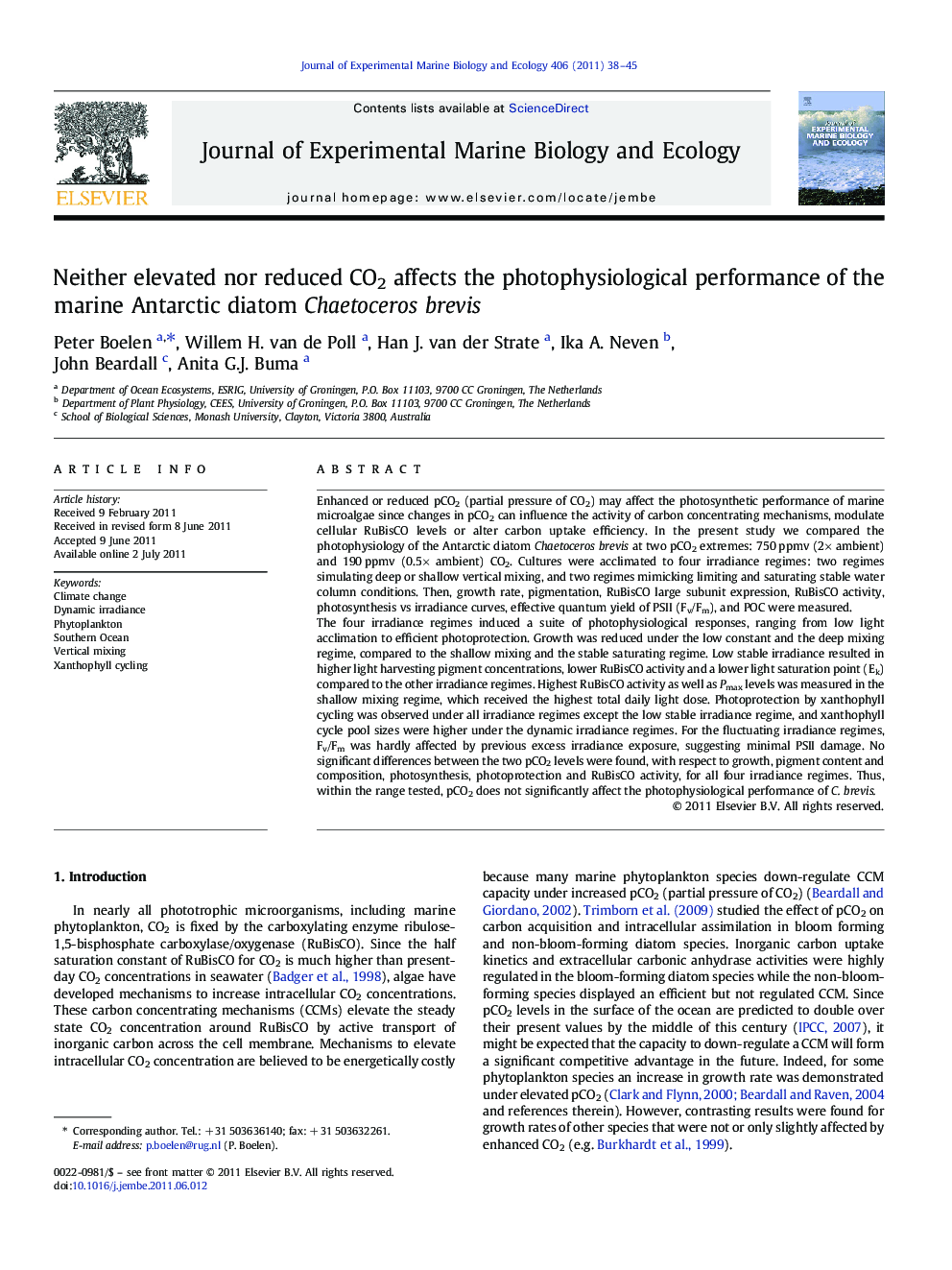| کد مقاله | کد نشریه | سال انتشار | مقاله انگلیسی | نسخه تمام متن |
|---|---|---|---|---|
| 4396275 | 1618457 | 2011 | 8 صفحه PDF | دانلود رایگان |

Enhanced or reduced pCO2 (partial pressure of CO2) may affect the photosynthetic performance of marine microalgae since changes in pCO2 can influence the activity of carbon concentrating mechanisms, modulate cellular RuBisCO levels or alter carbon uptake efficiency. In the present study we compared the photophysiology of the Antarctic diatom Chaetoceros brevis at two pCO2 extremes: 750 ppmv (2× ambient) and 190 ppmv (0.5× ambient) CO2. Cultures were acclimated to four irradiance regimes: two regimes simulating deep or shallow vertical mixing, and two regimes mimicking limiting and saturating stable water column conditions. Then, growth rate, pigmentation, RuBisCO large subunit expression, RuBisCO activity, photosynthesis vs irradiance curves, effective quantum yield of PSII (Fv/Fm), and POC were measured.The four irradiance regimes induced a suite of photophysiological responses, ranging from low light acclimation to efficient photoprotection. Growth was reduced under the low constant and the deep mixing regime, compared to the shallow mixing and the stable saturating regime. Low stable irradiance resulted in higher light harvesting pigment concentrations, lower RuBisCO activity and a lower light saturation point (Ek) compared to the other irradiance regimes. Highest RuBisCO activity as well as Pmax levels was measured in the shallow mixing regime, which received the highest total daily light dose. Photoprotection by xanthophyll cycling was observed under all irradiance regimes except the low stable irradiance regime, and xanthophyll cycle pool sizes were higher under the dynamic irradiance regimes. For the fluctuating irradiance regimes, Fv/Fm was hardly affected by previous excess irradiance exposure, suggesting minimal PSII damage. No significant differences between the two pCO2 levels were found, with respect to growth, pigment content and composition, photosynthesis, photoprotection and RuBisCO activity, for all four irradiance regimes. Thus, within the range tested, pCO2 does not significantly affect the photophysiological performance of C. brevis.
Research highlights
► We investigated the impact of pCO2 in an Antarctic diatom.
► Cultures were exposed to four highly different irradiance regimes.
► Responses varied from low light acclimation to efficient photoprotection.
► CO2 does not affect the photophysiological performance of Chaetoceros brevis.
Journal: Journal of Experimental Marine Biology and Ecology - Volume 406, Issues 1–2, 30 September 2011, Pages 38–45